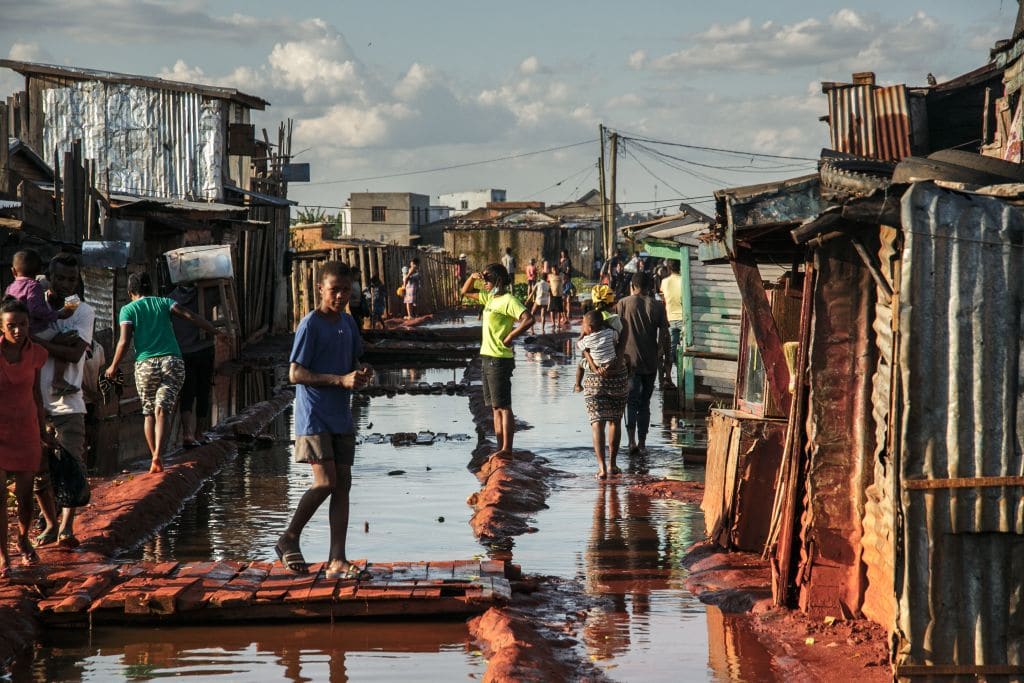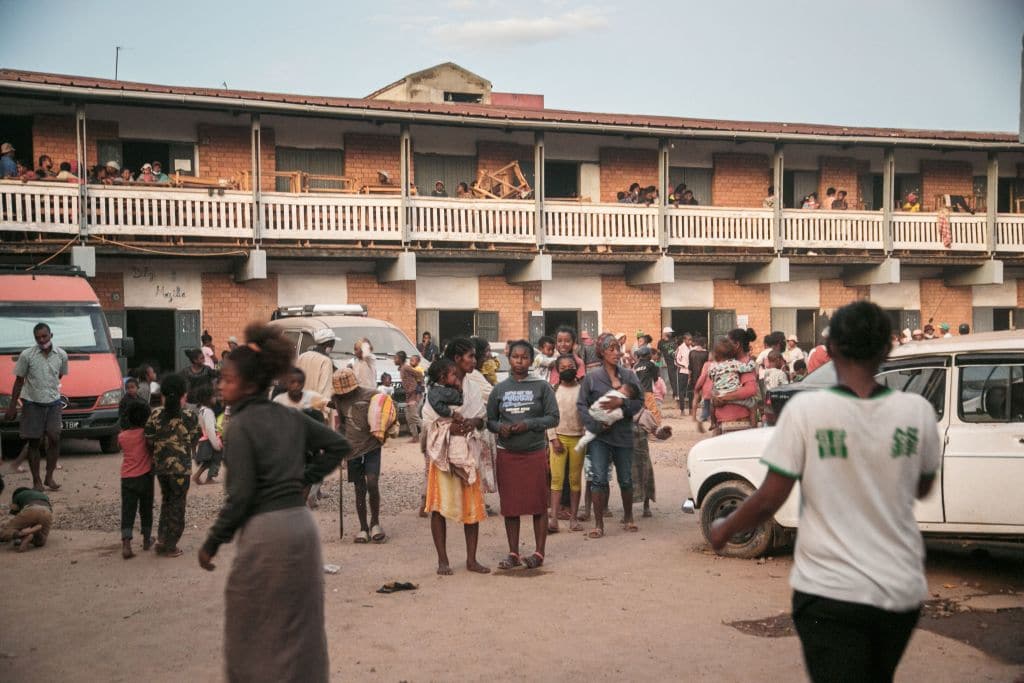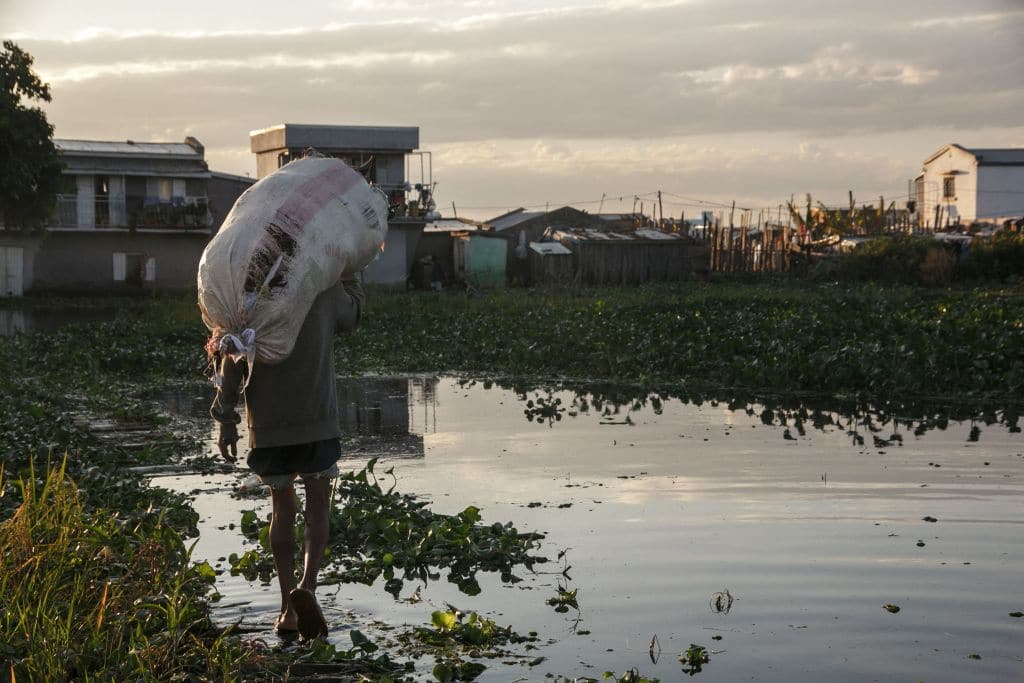Extreme weather events are on the rise due to climate change. Parts of southern Africa were recently ravaged by a tropical storm that tore through homes and lives and displaced thousands. Some accounts from those affected.
By Lillian Roberts
Topline
Tropical storm Ana hit Madagascar on January 22, proceeding to Mozambique by January 24, leaving a trail of destruction in Malawi and Uganda as well, with a rising death toll of 88 people, Reuters reports.
Key Facts
Fifty-one people have died in Madagascar, after floods and landslides. In Malawi, the death toll has risen to 33 with 20 missing, the Department of Disaster Management Affairs (DoDMA) says, with currently 1,277 injured. Eighteen people have been reported dead so far in Mozambique, while in Uganda, another nine people have been reported dead.
Heavy rainfalls are affecting Zambia and Zimbabwe as a result of the weakening tropical storm. Parts of Zambia and Zimbabwe are flooded.
Background
Mike Aldworth, Managing Director of FES, a company doing across-the-board mechanizing of agriculture, irrigation and construction in Malawi and Zambia, was on-site in Malawi after the floods.
FES also operates drones in Malawi, using the drones currently to assess the soil erosion and damage done by the flooding.
Aldworth says there were many factors leading to the flooding, though such natural events are not unusual because of the yearly belt of rain.
South west of Malawi’s city Blantyre, the Shire River enters its final phase before leaving Malawi, joining the great Zambezi in Mozambique. The river descends to the lower valley through rapids and waterfalls before broadening out along a wide floodplain, used by sugar plantations. These are Malawi’s lowest areas. Access to the Lower Shire valley is along the M1 south of Blantyre and down the steep Thyolo Escarpment.
Deforestation is an issue, as local subsistence farmers use every bit of land they can next to the river, leading to no vegetation to slow water, Aldworth reports. The dry season is roughly from mid-March to mid-October, and in summer’s rainy months, Aldworth says temperatures can reach the mid-40s (celsius) on the floodplain.
“It’s a hostile environment, with malaria in summer, and difficult living conditions. People take any opportunity to get better soil. If you interviewed anyone, they are likely to say it’s worth the risk,” Aldworth says.
The flooding recently broke through the Kapachira dam in Chikwawa district, breaking riverbanks and taking off parts of the road.
With the Kapichira Hydroelectric Power plant reportedly badly damaged by the floods, there are blackouts too in the country, affecting people and businesses indiscriminately.
“Around 350mm fell in one day, and all the water went down the escarpment into the valley. It was chaos,” Aldworth says.
Locals use home-made fired clay bricks to build houses – and Aldworth says houses have been washed away, not just in the valley – as a result of this.
“Down in the valley, it was bad. This is the third flood I’ve seen in the ten years I have lived in Malawi, but the most damage I have ever seen. The problem is it was a lot of water in a short space of time,” Aldworth says.

Sherifa Mia, a senior program manager of Gift of The Givers in Malawi, spoke to FORBES AFRICA after a disaster briefing with the Malawian government, the United Nations (UN) and various NGOs on February 1 in the aftermath of Ana.
The mood is optimistic as the ground is drying up, allowing aid operations to access previously inaccessible places, Mia says.
Lower Shire, the river valley in Chikwawa, Malawi, has been the worst affected, with 84,000 households impacted.
More than 20,000 families have been displaced and are now housed in camps, particularly in schools and churches. Mia says people are crammed in small spaces and schools can only host so many, as classes must continue.
Gift of The Givers was one of the first organizations on the ground, delivering food. “People hadn’t eaten for three days,” Mia says, adding that people have lost livestock, crops and their means of livelihood. The majority of Malawi depends on subsistence agriculture, she adds.
This week, the government, UN and NGOs such as Gift of The Givers are planning for the next three months to ensure citizens have food, homes and shelters.
They also focus on helping the traumatized. Mia says she encouraged staff to speak to people who are distressed to let them know they are not alone.
“Children are traumatized. One child said ‘now our school has turned into our home’,” Mia says.
Additionally, through a system called Village Civil Protection Committees, citizens are trained by the government to provide support in times of crisis.
Mia says there could be more people dead or missing in still inaccessible areas.
A truck got stuck in the mud, in Traditional Authority Nkanda, Mulanje district, while trying to deliver food to the 1,050 families living in camps, and was only removed at midnight.
“I called and gave them encouragement, as well as a day off to reboot and come back,” Mia says.
Overall, the plea is for food, and as much help as possible.
“A lady with six children who lost everything and had not eaten in days was relieved when we brought food. Her children were not going to school because they had not eaten, and now they can go to school.”
Tangent
Climate activist Edwin Namakanga in Kampala, Uganda, moved to the city with his family, due to land that was difficult to farm, and also the frequent floods and landslides in Eastern Uganda, in Bududa, his hometown.
Namakanga says people normally return after an extreme weather event, because of the legacy of land.
Flooding within the city is an issue, with uncovered drainage systems posing a risk for human lives. People in informal settlements raise their beds during heavy rains. After the rains subside, they use basins to remove the water.
In 2020, Namakanga saw boys playing soccer outside in the rain. One boy’s rubber sandal slipped off, falling into an open trench of water.

“The water looks calm, but it is dangerous,” Namakanga says.
The boy jumped in, and was swept away. The other children called the adults, but by the time they had followed his course and found him by the wire mesh that stops rubbish, he had drowned.
Namakanga is involved in climate change awareness and mitigation projects; the RISE movement, planting trees to help mitigate the impact of deforestation, and empowering young women with financial literacy, clothes and sowing skills. He recently met with Greta Thunberg and attended the last UN climate change conference.
“You’ll find it is women and girls who are the most vulnerable in the climate crisis. The little we can do, we try and reach out,” Namakanga says.
Community clean-ups, putting pressure on people in power, proper drainage systems and educating community leaders on the climate crisis are some of the suggestions Namakanga has for adapting to climate change.
Western Uganda and Lake Victoria were recently affected by tropical storm Ana, displacing people at the slopes of Mount Rwenzori, and the fisherman who live at the shores of Lake Victoria, says Namakanga.
“You can’t even see the beaches at Lake Victoria anymore,” he adds.
